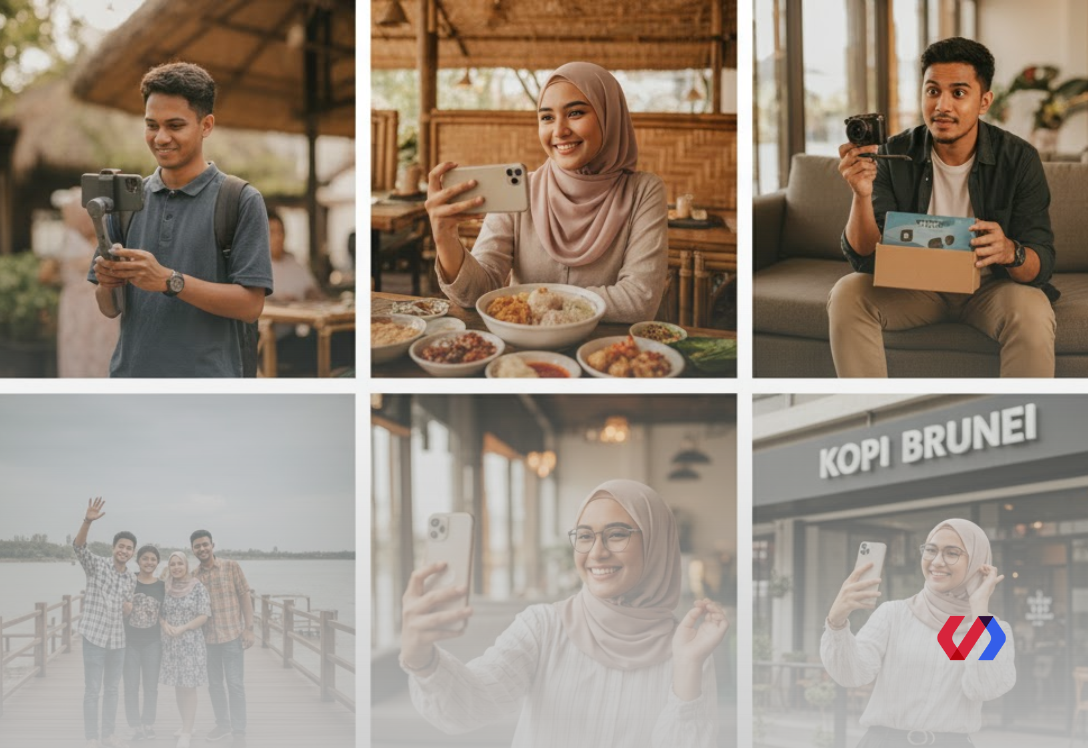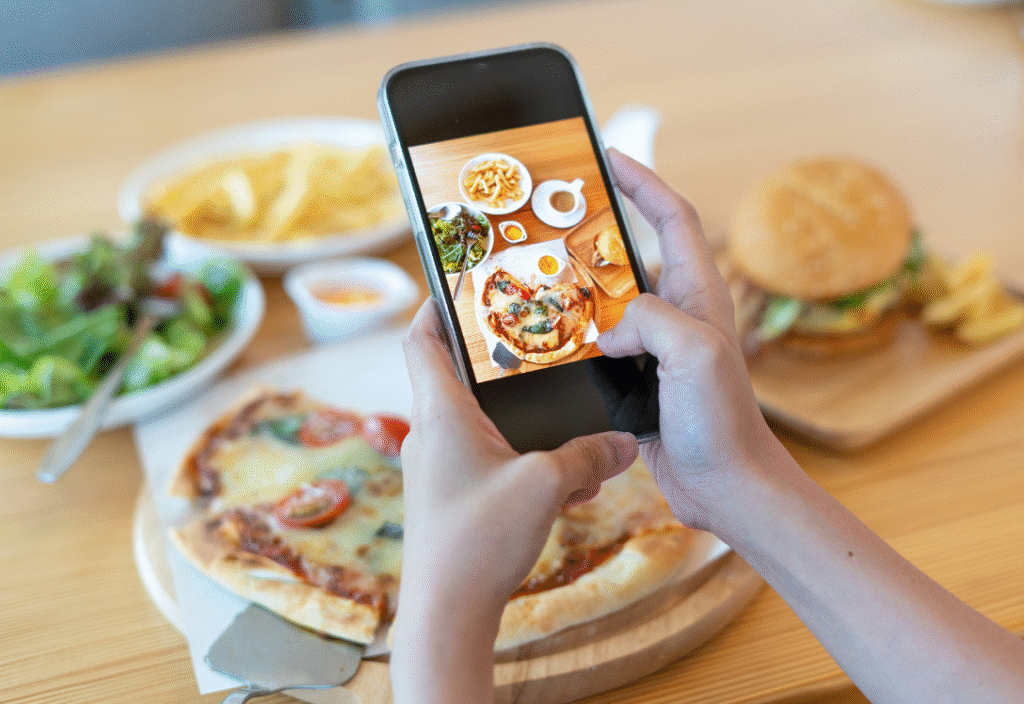Every time a customer posts about your business, tags your location, or shares their experience, they’re doing something incredibly valuable: creating content that money can’t buy.
Authentic. Trusted. Persuasive.
Here’s what makes this even more powerful in Brunei: people already want to share about businesses they love. Bruneians naturally post their nasi katok finds, their new skincare products, their cafe visits, and their service experiences. The content creation is already happening.
The question isn’t whether your customers will create content. It’s whether you have a system to encourage it, collect it, and leverage it effectively.
Why User-Generated Content Works Particularly Well in Brunei
Before we dive into tactics, let’s understand why UGC (user-generated content) is especially powerful in Brunei’s market.
Trust beats advertising every time. When someone sees their friend, colleague, or even a stranger post genuinely about your business, it carries infinitely more weight than your own promotional content. In Brunei’s relationship-driven culture, this peer validation is the difference between “I’ll think about it” and “I’m going there today.”
It reflects real experiences. Your marketing shows your best angle. Customer content shows reality. And paradoxically, that unpolished authenticity makes it more believable and more effective. A slightly blurry photo of your dish taken under restaurant lighting feels more genuine than your professional product shot.
It extends your reach organically. Every customer post exposes your business to their network. In Brunei’s interconnected community, these networks often overlap in unexpected ways. Your customer’s cousin sees their post, remembers they need your service, and suddenly you have a new customer without spending a dollar on ads.
It saves you enormous time and effort. Instead of creating all content yourself, your customers become an extension of your content team. They’re creating testimonials, product demonstrations, unboxing videos, and reviews while you focus on running your business.
The beauty is that Bruneians are already inclined to share. You just need to make it easier, more rewarding, and more systematic.
Understanding the Psychology: Why Customers Share (Or Don’t)
Before asking customers to create content, understand what motivates them.
They share when they feel something. Exceptional service, surprising quality, memorable experiences, or solving a real problem. These emotional moments naturally trigger the urge to tell others.
They share when it reflects well on them. Posting about your business becomes part of their personal brand. A beautifully plated dish makes them look like they have great taste. A clever purchase makes them seem savvy. Premium service suggests they’re successful. Consider how sharing your business enhances their image.
They share when it’s effortless. If creating content feels like work, most won’t bother. But if you make it easy and natural, they’ll do it happily.
They don’t share when they’re unsure. If customers aren’t sure you want them to post, or if they think you might be annoyed by tagging, or if they worry about getting it wrong, they stay silent. Your job is to remove this uncertainty.
They don’t share when there’s nothing worth sharing. Generic experiences don’t inspire content. Remarkable ones do. Sometimes the barrier isn’t your customer, it’s that you haven’t given them a moment worth capturing.
Creating Shareable Moments
The foundation of user-generated content isn’t asking for it. It’s creating experiences so good that people can’t help but share.
Make your product or service visually appealing. This doesn’t mean everything needs Instagram-perfect aesthetics, but it should photograph well. A cafe’s latte art, a boutique’s packaging, a salon’s before-and-after transformations. These are naturally shareable.
Design surprising moments. Unexpected touches create content. A handwritten thank-you note with an order. A small bonus gift. A personalized recommendation. These surprises delight customers and often get shared immediately.
Create photo-worthy spaces. If you have a physical location, consider your backdrop. Good lighting, clean spaces, and interesting visual elements make customers more likely to take photos. A Brunei cafe with a distinctive mural or cozy corner becomes the backdrop for countless customer posts.
Celebrate customer wins. When a customer achieves results using your product or service, that’s content gold. A fitness studio celebrating client progress. A tutor sharing student improvements. A skincare brand highlighting transformation. These stories inspire others while creating shareable moments.
The Direct Ask: How to Request Content Without Being Pushy
Bruneians will share about your business, but sometimes they need permission or encouragement. Here’s how to ask effectively:
Make it part of the experience. Train your team to mention it naturally. “If you enjoy this, we’d love to see your photo! Feel free to tag us.” This casual mention plants the seed without pressure.
Signage works. A small, tasteful sign near your checkout or exit: “Share your experience! Tag us @yourbusiness” with your Instagram handle. It serves as a gentle reminder.
Include it in packaging or receipts. A small note in delivery packages: “Love what you received? Share a photo and tag us!” This catches customers at peak satisfaction.
Ask at the moment of delight. When you can see a customer is genuinely happy, that’s your moment. “We’re so glad you love it! If you post about it, we’d be honored if you tagged us.” Timing matters.
Be specific about what you’re looking for. Instead of vague “share your experience,” try “We’d love to see how you style this” or “Show us your favorite way to enjoy our coffee.” Specific prompts generate more responses.
The key is making the request feel like an invitation, not an obligation. You’re not demanding content, you’re expressing that you’d be honored if they chose to share.
Incentivizing Without Cheapening the Experience
Should you reward customers for creating content? In Brunei’s context, the answer is nuanced.
Small appreciations work well. A discount on their next purchase. A small freebie. Entry into a monthly draw. These show appreciation without making it feel transactional.
Feature-based incentives feel authentic. “Share your experience and we’ll feature you on our page this week!” For many customers, the recognition matters more than monetary rewards.
Exclusive access creates value. Customers who regularly post about you get early access to new products, special events, or VIP experiences. This builds a community of advocates.
Avoid making it purely transactional. “Post about us and get 50% off” can work, but it risks attracting people who only care about the discount, not genuine advocacy. The best UGC comes from authentic enthusiasm, not manufactured obligation.
Recognize and celebrate organic posts. When customers share without prompting, acknowledge it publicly. Reshare their content, thank them by name, comment thoughtfully. This reinforces the behavior and encourages others.
A Brunei clothing boutique might offer customers who tag them a “styling credit” toward accessories. A cafe might give regular sharers first access to limited menu items. These incentives feel generous rather than calculated.
Making It Easy: Reducing Friction
The easier you make content creation, the more you’ll receive.
Optimize your tagging. Ensure your business name on Instagram and Facebook is easy to spell and find. Create a simple, memorable hashtag if appropriate.
Provide Wi-Fi with easy access. Customers who can immediately upload their content are more likely to do so. Don’t make them wait until they get home.
Help with the caption. Some customers struggle with what to write. Provide suggestions: “Trying the best [your specialty] in Brunei!” or “Finally visited [your business] and it was worth it!” These prompts lower the barrier.
Make your handle visible everywhere. On packaging, receipts, menus, signage, staff uniforms. The more visible, the easier it is for customers to tag you correctly.
Respond quickly to tags and mentions. When customers tag you, acknowledge it within hours if possible. This positive reinforcement encourages them and others to keep sharing.
Curating and Resharing: Best Practices
Once customers create content, how you handle it matters enormously.
Always ask permission before resharing. Even though they tagged you, ask before reposting to your feed. A simple DM: “We love your photo! Would you mind if we shared it on our page?” Most say yes, and they appreciate being asked.
Credit properly and generously. Always tag the original creator. Use their caption or acknowledge their words. Give full credit, not begrudging mentions.
Reshare diverse content. Don’t only share the most aesthetic posts. Mix professional-looking content with authentic, everyday customer moments. This shows that all customers are valued, not just the Instagram-perfect ones.
Use Stories for more casual UGC. Your feed might feature more curated content, but Stories are perfect for quickly resharing customer tags, creating a running celebration of your community.
Create UGC highlights. Archive customer content in Instagram Story Highlights like “Customer Love” or “Real Experiences.” New customers can see authentic social proof immediately.
Thank them publicly. When resharing, write genuine appreciation: “Thank you @customer for sharing your experience with us!” Personal acknowledgment strengthens the relationship.
Different Types of UGC to Encourage
Not all user-generated content looks the same. Diversify what you’re encouraging:
Photos and videos of products in use. Customers wearing your clothes, using your skincare, eating your food, enjoying your service.
Unboxing and first impressions. Especially powerful for e-commerce businesses. The genuine reaction when opening a package.
Reviews and testimonials. Written feedback on Google, Facebook, or in DMs that you can (with permission) turn into graphics.
Before-and-afters. Particularly relevant for services like fitness, beauty, renovation, tutoring. Transformation stories are compelling.
Behind-the-scenes from customer perspective. What does visiting your location feel like? What’s the customer experience? Let them show others.
User tips and hacks. Customers often discover creative ways to use your products. These become valuable content showing versatility.
Each type serves a different purpose. Photos prove popularity. Reviews build trust. Transformations show results. Mix them strategically.
Building a UGC System That Runs Itself
Here’s how to systemize user-generated content collection:
Week 1: Set up infrastructure. Create a dedicated folder for UGC. Set up saved reply templates for permission requests. Create a simple tracking sheet.
Week 2: Train your team. Ensure everyone knows how to encourage sharing, what to say, and when to mention it.
Week 3: Create your ask prompts. Write the language for signage, packaging inserts, and staff scripts. Make it natural and on-brand.
Week 4: Establish your workflow. Who monitors tags daily? Who requests permission? Who schedules reshares? Document the process.
Ongoing: Monitor, engage, appreciate. Set aside 15 minutes daily to check tags, respond to mentions, and reshare one piece of customer content. Consistency matters more than volume.
The Long-Term Compound Effect
Here’s what happens when you consistently encourage and leverage UGC:
Your content calendar fills itself. You’re not scrambling for ideas because customers provide a steady stream.
Trust builds faster. New customers see real people, not just marketing messages.
Community forms naturally. Customers start engaging with each other’s posts about your business.
Word-of-mouth accelerates. Every shared post reaches new networks, creating organic growth.
Your workload decreases. Instead of creating everything yourself, you’re curating and celebrating what customers create.
The businesses thriving in Brunei aren’t doing all the talking. They’ve built systems where satisfied customers do the talking for them, creating content that’s more trusted, more authentic, and more effective than anything they could create themselves.
Your customers already want to share about you. Give them reasons, remove barriers, and watch your content library grow.



